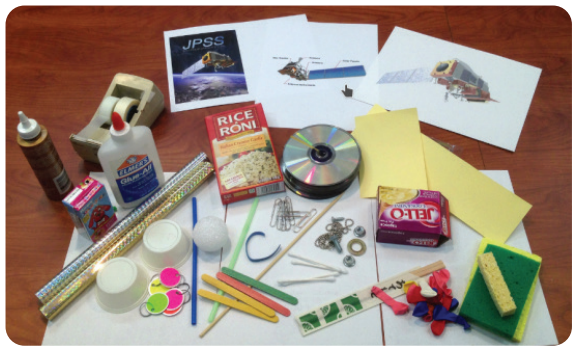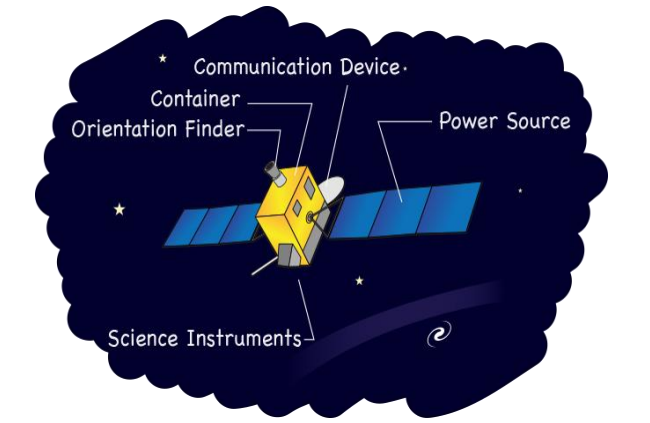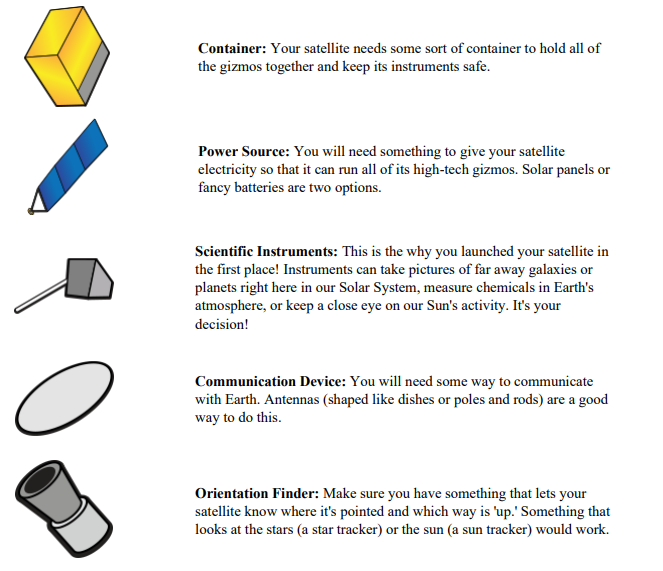PRACTICAL EXERCISE 2: Build a model of a space observatory
This activity is suitable for students from grades 4 to 6. It is adapted from NASA Space Place: https://spaceplace.nasa.gov/build-a-spacecraft/en/
Aim
The students will learn about and build their own model of a space observatory/telescope using the listed below materials. It is up to each student to decide how the model will look. However, there are some elements that have to be present. These are given in the instructions.
Necessary materials (shown on the picture below):
juice boxes or other small boxes chopsticks
popsicle sticks
toothpicks
plastic cups and bowls straws
screws, nuts, bolts, etc. construction paper CDs or DVDs
rubber bands
velcro tape
paperclips balloons shiny paper sponges Elmer's glue

Instructions for the teacher
This activity may be done individually, or in teams of 2 or 3 students. The list of materials above is not compulsory. You can decide whether to exclude or replace some object due to safety or other considerations. In Attachment 2 are given examples for real space observatories and telescopes, which you can show for illustration. The students have to design and build the model for about 20 minutes in total, and then will have 5 minutes to present it to the rest of the class and explain the purpose of the different elements. If you wish, you can make it in a form of competition for the best model.
Instructions for the student
How would you like to be the chief engineer for an important NASA mission? In this activity, you get to design the latest and greatest space observatory or telescope. It could help study the Universe, take pictures of planets in our solar system, keep an eye on our sun, or even find planets elsewhere in the universe!
1. You have 5 minutes to decide what the purpose of your observatory will be and make a plan for the model. While you are building your observatory, keep in mind that it must have some basic things:


2. You have 15 minutes to build your model.
3. You have 5 minutes to present your model, its elements and purpose to the rest of the class.
An example of a ready model



